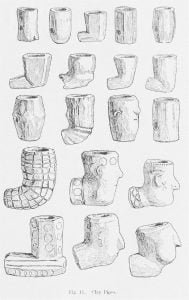A Description of the Towns on Coosau and Tallapoosa Rivers
Tal-e-see, from tal-o-fau, a town, and e-see, taken. Situated in the fork of Eu fau-le on the left bank of Tal-la-poo-sa, opposite Took-au-bat-che. Eu-fau-be has its source in the ridge dividing the waters of Chat-to-ho-che, from Tal-la-poo-sa, and runs nearly west to the junction with the river; there it is sixty feet wide. The land on it is poor for some miles up, then rich flats, bordered with pine land with reedy branches, a fine range for cattle and horses. The Indians have mostly left the town, and settled up the creek, or on its waters, for twenty miles. The … Read more









